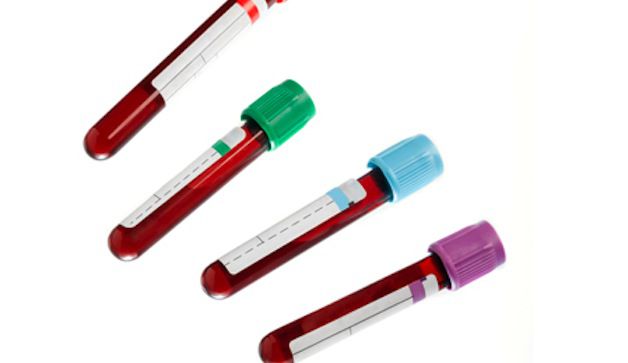How Long Is a Phlebotomy Program? Duration,Courses,and What to Expect
If you’re considering a career in healthcare,particularly in patient care and laboratory work,becoming a phlebotomist can be a rewarding choice. One of the most common questions aspiring students ask is, “How long is a phlebotomy program?” The answer varies depending on the program type, setting, and your career goals. This extensive guide will walk you through the typical program duration, the courses offered, and what you can expect during your training.Whether you’re looking for quick certification or a more in-depth training, this article has valuable insights to help you plan your path to becoming a certified phlebotomist.
Understanding Phlebotomy Programs
Phlebotomy programs are designed to equip students with the skills necessary to draw blood safely and efficiently for laboratory testing, donations, and other medical procedures. These programs are often offered through community colleges, vocational schools, hospitals, and online institutions. The primary goal is to prepare students for certification exams and practical work environments.
How Long Is a Phlebotomy Program? Typical Durations
The duration of a phlebotomy program can vary widely based on the level of training, program type, and whether you attend full-time or part-time. Here’s a breakdown of the most common program durations:
| Program Type | Duration | Details |
|---|---|---|
| Certificate Program (Fast Track) | 1-4 weeks | Intensive, focused training; ideal for quick certification |
| Diploma or Certificate Program | 4-12 weeks | More comprehensive, includes clinical practice |
| Associate Degree (with Phlebotomy Focus) | 1-2 years | Includes general education and clinical labs; good for broader healthcare careers |
Courses Included in Phlebotomy Programs
Most phlebotomy training programs cover a mix of theoretical knowledge and practical skills. Here are some of the typical courses and topics you’ll encounter:
Core Courses
- Anatomy and Physiology – Understanding the human body, especially the circulatory system
- Medical Terminology – Learning the language used in healthcare settings
- Phlebotomy Techniques – Blood collection methods, safety procedures, and proper equipment use
- Blood Collection Procedures – Venipuncture, capillary puncture, and specimen labeling
- Patient Care and Interaction - Interacting professionally with patients
- Safety and Infection Control – preventing contamination and ensuring safety protocols
Practical Training
- Supervised clinical practice in hospitals or labs
- Hands-on blood draw experiences
- Handling arduous patients
- Proper specimen handling and documentation
What to Expect During Your Phlebotomy Training
Embarking on a phlebotomy program involves a mix of classroom instruction and practical experience. Here are some key points to keep in mind:
Hands-On Experience
Most programs require students to perform blood draws on real patients under supervision. This practical component is crucial for building confidence and competency.
Certification Preparation
Programs typically prepare students for national or state-specific certification exams, such as the National Healthcareer Association (NHA) or the American Society for Clinical Pathology (ASCP).
Clinical Rotations
Participating in clinical externships provides real-world experience and networking opportunities. These often last a few weeks, depending on the program.
Benefits of Completing a Phlebotomy Program
- Quick entry into the healthcare field with short training periods
- High demand for qualified phlebotomists in hospitals, clinics, and blood donation centers
- Potential for career advancement in allied health fields
- Opportunity to work in a fast-paced, rewarding habitat
Practical Tips for Aspiring Phlebotomists
- Choose accredited programs: Ensure the program is accredited for certification eligibility.
- Invest in quality training: Practical skills are critical; hands-on practice builds confidence.
- Prepare for certification exams: Review test materials and focus on safety and patient communication.
- Gain clinical experience: Seek internship opportunities or volunteer to enhance your skills.
Case Study: A Day in the Life of a Phlebotomy Student
Jessica, a recent graduate, completed a 6-week certificate program at her local community college. Her training included classroom modules on blood collection techniques, infection control, and patient interaction. She then participated in clinical rotations at a hospital, performing blood draws with supervision. After passing her certification exam, Jessica now works at a blood donation center, performing safe and efficient blood draws every day. Her practical experience and certification helped her secure her first healthcare job quickly and confidently.
Summary: How Long is a Phlebotomy Program?
the length of a phlebotomy program can range from as short as *one week* for fast-track certifications to *up to two years* for associate degrees. The choice depends on your career goals, time availability, and the depth of training you desire. Nonetheless of the program length, pre-licensure training must include both classroom education and hands-on clinical practice to ensure you’re ready to work safely and confidently in the field.
Final Thoughts
If you’re passionate about healthcare and looking for a quick entry point into the medical field, a phlebotomy program offers an excellent opportunity. Not only do you develop valuable skills in patient care, but you also position yourself for a rewarding career with steady demand. Be sure to choose a program that fits your schedule and career aspirations, and prepare thoroughly for certification. With dedication and proper training, you’ll soon be on your way to making a difference in patients’ lives one blood draw at a time.
Ready to Start Your Phlebotomy Journey?
Research local training programs, check their accreditation status, and enroll today. Your new healthcare career is just a few weeks away!
